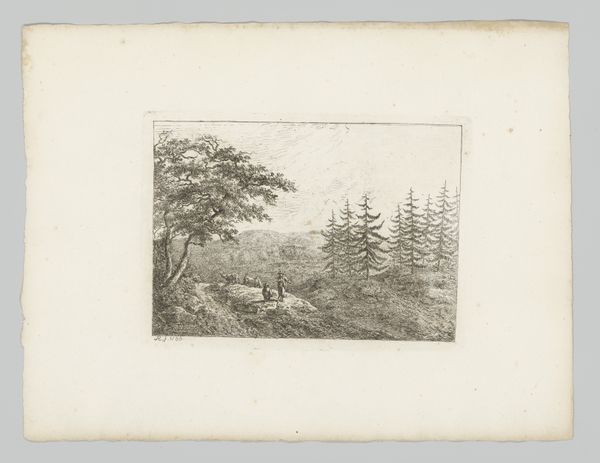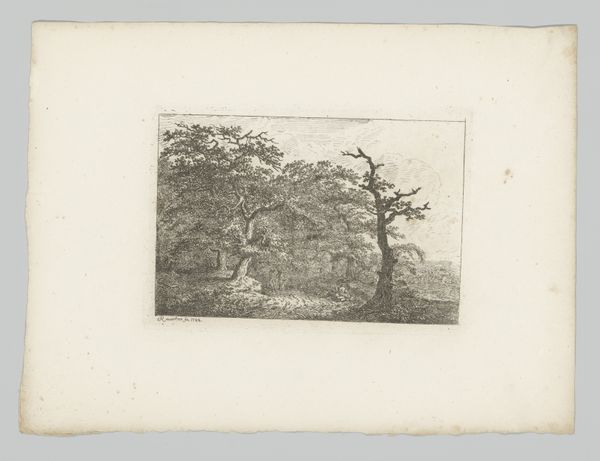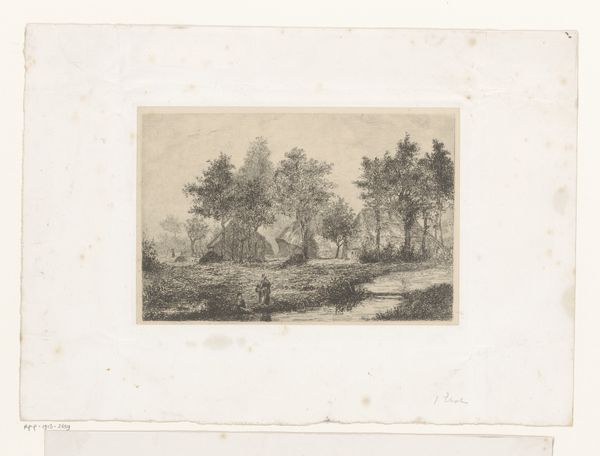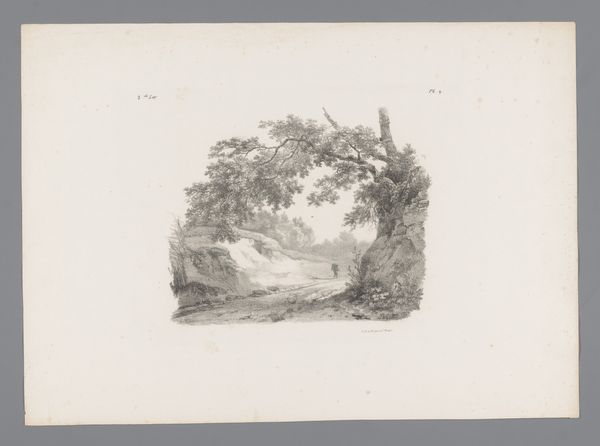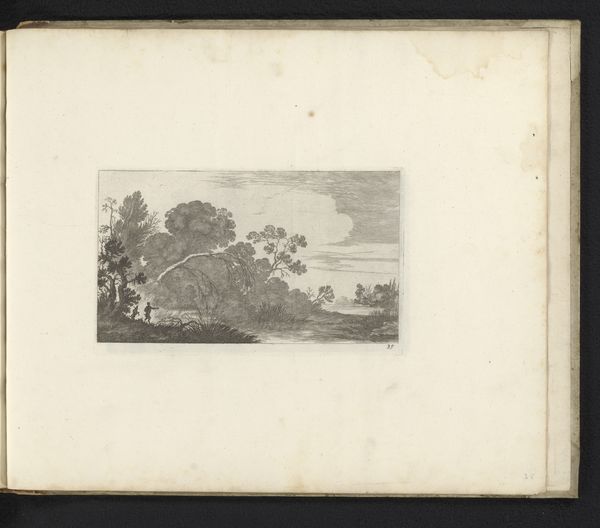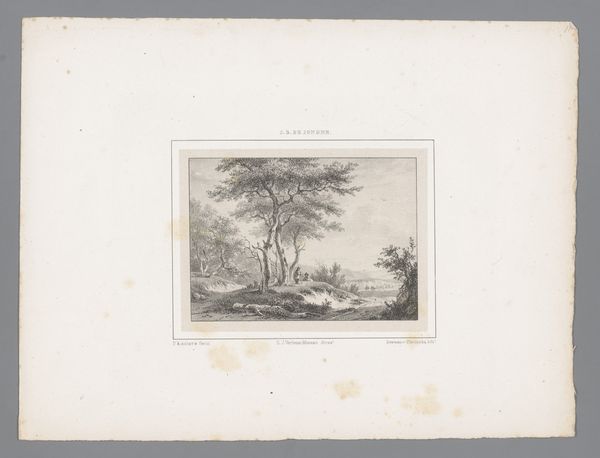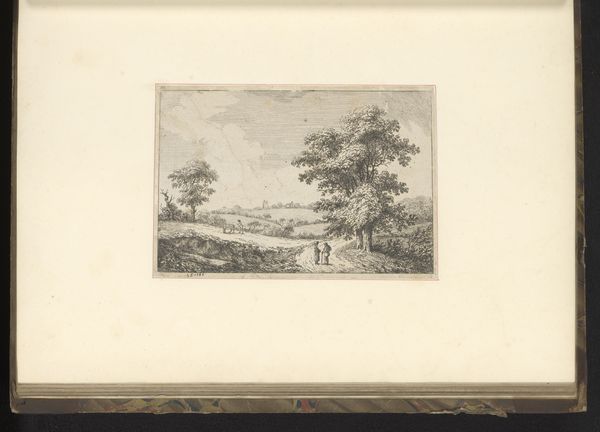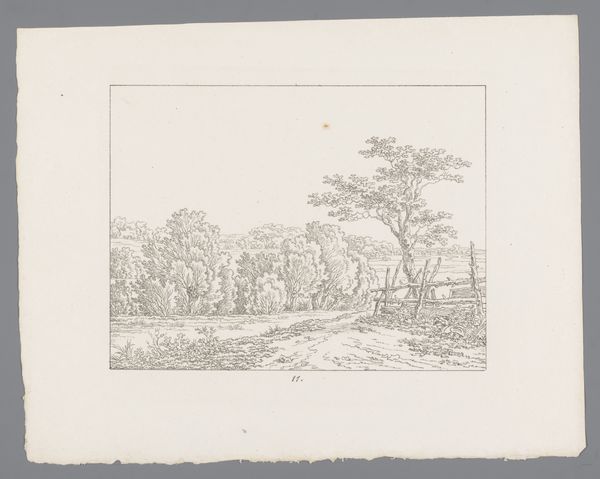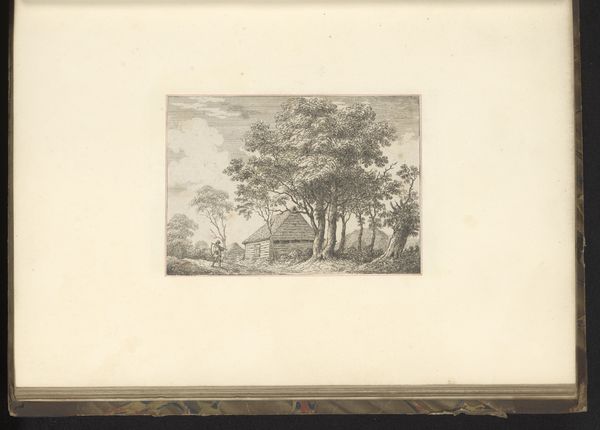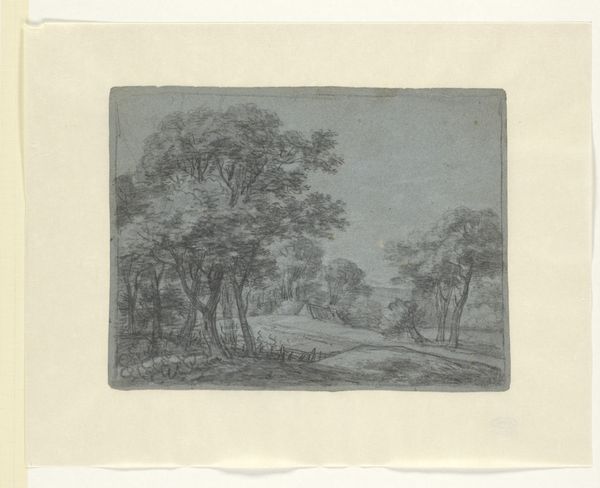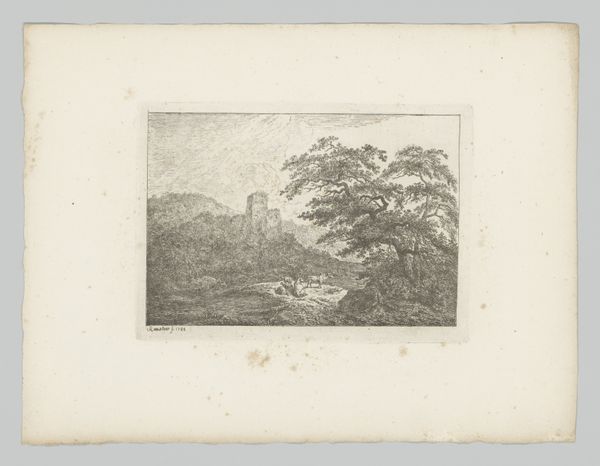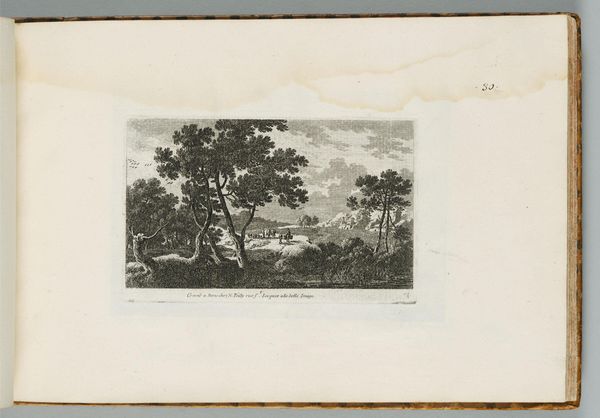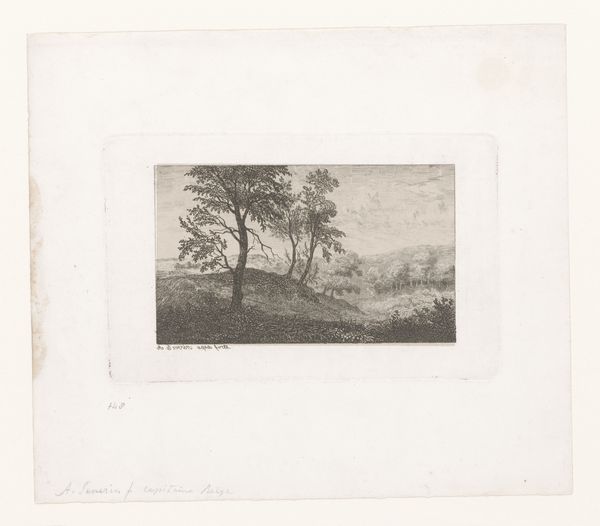
Heuvellandschap met twee mensen met twee schapen en een hond 1788
0:00
0:00
Dimensions: height 127 mm, width 184 mm
Copyright: Rijks Museum: Open Domain
Curator: Here we have Friedrich Rauscher's "Heuvellandschap met twee mensen met twee schapen en een hond," or "Hilly Landscape with Two People with Two Sheep and a Dog" from 1788, housed here at the Rijksmuseum. The artwork is a print on paper, specifically an engraving. Editor: It has a certain serenity, doesn't it? Despite the precision of the engraving, the atmosphere is very tranquil. The hazy background gives it a timeless quality. Curator: Absolutely. The setting is a key element here. Rauscher made this print in a time where societal focus increasingly gravitated to agrarian labor and its relationship to nature, mirroring a rise in romanticist thinking about national identity tied to regional rural spaces. Editor: So, the placement of the shepherds is intentional. How might we unpack the symbolism regarding gender in this rural representation, in a socio-economic structure like this? Curator: That's a fascinating line of inquiry! I wonder, in what way were idyllic visions like these politically motivated, beyond just being picturesque scenery? Editor: Perhaps it's a reminder of the human-animal connection within larger socio-political ideologies of labor. Land ownership and stewardship are wrapped up in it, wouldn’t you agree? This feels linked to ongoing narratives around sustainability and class, and those people depicted there have a role in these paradigms, wouldn't you agree? Curator: Without a doubt, class dynamics were central to the landscape genre then, which often subtly affirmed existing social hierarchies through the romantic idealization of rural life and the hard-working people that animated them, as a counterpart to the societal transformation imposed by burgeoning cities. Editor: It serves to re-center labor, perhaps masking some issues and spotlighting other virtues during turbulent times. It’s a quiet statement within broader socio-political shifts. Thanks for shedding some light on this. Curator: Thank you. Thinking about the implications in terms of socio-political influences makes me see new meanings, too.
Comments
No comments
Be the first to comment and join the conversation on the ultimate creative platform.
